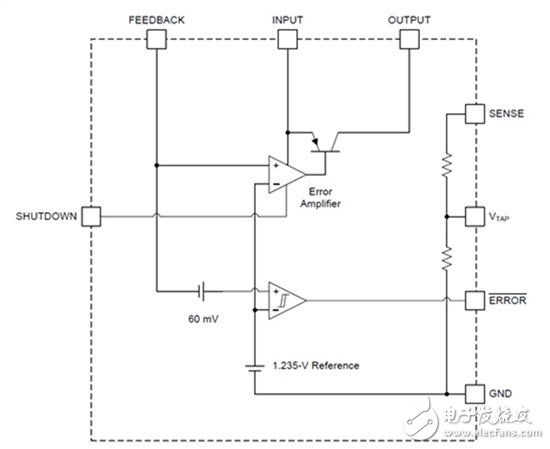As the Internet of Things (IoT) continues to occupy our homes and offices, we find more and more appliances and systems that integrate electronic components, and we can access them in any corner of the world. However, because so many devices are connected to our homes and offices, we consume countless standby power. How can we make thermostats, gates, doorbells, security systems and televisions more efficient without any impact on connectivity? If I told you a simple linear regulator to do this, would you believe it? The following gives the answer.
LDO can bring higher efficiency
Many designs in our lives and workplaces rely heavily on sensors to provide precise functionality. Many of these sensors need to resolve fractional temperatures, detect small amounts of chemicals or gases, and measure very small amounts of liquid. Since efficiency is critical for sensing, we need to integrate a Switch Mode Power Supply (SMPS) to achieve efficiencies above 80%. Unfortunately, when the switching regulator is integrated, external factors such as voltage swings are generated, which has a negative impact on the function of the sensor.
Normally, we add an LDO to the output of the SMPS to solve this problem. LDO reduces the overall efficiency of the power supply design; however, it allows us to maintain efficiency at 70%, overall performance is improved compared to full linear solutions, and their overall efficiency is between 10-20%. The LDO also features a power supply rejection (PSR) feature. The PSR helps with power fluctuations. Since the LDO acts as a filter, fluctuations no longer affect the sensor. Let's take a look at the situation when using the TPS717 LDO.

Since most sensor hubs and subsystems require low current, we can use a 10 mA load to analyze our signals. If we assume a running frequency of 2.1Mhz, the TPS717 has an extra 40dB PSR, which means that the LDO reflected ripple is 100 times lower than the SMPS reflected ripple.
LDO system consumes very little energy
Regardless of efficiency, we are now focusing on the lower power consumption of the system and reducing our overall standby power consumption. In order to calculate the power dissipation of the LDO, we must look at the voltage drop between the input and the output, and the current that the LDO is providing is:

Although the impact of our LDO on overall power consumption is not obvious, many LDOs such as the LP2951 have a shutdown feature that shuts down the power supply currently supplying the system.

Figure 2: Functional diagram of the LP2951
In shutdown mode, system power loss is limited only to the shutdown current:

When the LP2951 is used as an example, and with its shutdown current as an example, we can reduce the power loss by a factor of 1000.
in conclusion
Does this mean that we can rely solely on LDOs to make our power supply designs more efficient? No, we still need to make a general consideration. In fact, the efficiency of the system is influenced by the overall design. However, by adding the right LDO, we can ensure that the clean supply rails are provided for many of the sensors on which the design depends, and we can guarantee that the sensor will only consume power when we need it to run.
Screw Thread type NTC Temperature Sensor with the properties of liquid temperature measurement, good waterproof effect and plug-in detection has been used into water heater, liquid temperature measurement, testing water temperature in pipe and so on.
Temperature range is from -30°C to 150°C.
Screw Thread Sensor
Screw Thread Sensor,Water Temperature Sensor,Liquid Temperature Sensor
Feyvan Electronics Technology Co., Ltd. , http://www.fv-cable-assembly.com